Design of a Bidirectional Wireless Power Transfer System for Vehicle-to-Home Applications
Abstract
:1. Introduction
2. Vehicle-to-Home Strategy
3. Operating Requirements of the BWV2H Wireless Charger
3.1. Reference Technical Rules for the Connection to the LV Electrical Utilities
3.2. SAE J2954 Standard
4. Grid-Side and Battery-Side Specification
5. Sizing of the Power Converters
5.1. Front-End Converter
5.2. Bidirectional Chopper
5.3. High-Frequency Primary Converter
5.4. High-Frequency Secondary Converter
6. Sizing of the Coupling Coils and Compensation Networks
7. Results and Discussion
Simulations
- 0–0.3 h: the battery voltage is constant at its minimum value VB,m; the current and the power are equal to 0.
- 0.3–2 h: the current initially is at the nominal value IB,N,c given by (12) and the battery voltage increases from VB,m until it reaches the maximum value VB,M; the current consequently decreases in order to comply with the power limitation.
- 2–3 h: the voltage is kept at the maximum value VB,M during the constant-voltage charging stage; simultaneously, the current decreases and so does the power.
- 3–4 h: the battery is in discharging mode. The voltage decreases reaching the minimum value VB,m. The battery delivers the nominal current IB,N,d. The power is maximum only for the first instants when the battery voltage is equal to VB,M, since the current is fixed at IB,N,d; then, the power follows the voltage profile.
- 4–4.3 h: during the last period, the battery voltage is constant at minimum value, whilst the current and the power are equal to 0.
8. Conclusions
Author Contributions
Funding
Institutional Review Board Statement
Informed Consent Statement
Data Availability Statement
Conflicts of Interest
Nomenclature
| AC | Alternating Current |
| BMS | Battery Management System |
| BC | Bidirectional Chopper |
| CDCP, CDCS | High-Frequency Primary and Secondary Converter DC capacity |
| CP, CS | Primary and secondary resonant capacitor |
| δ | Duty cycle of the Bidirectional Chopper |
| DC | Direct Current |
| ΔIO | Peak-to-peak current ripple on the inductor LO |
| ΔVHFPC | Peak-to-peak voltage ripple on the capacitor CHFPC |
| ηc | Power converter efficiency |
| ηt | Transmission efficiency between the two coils |
| ηtot | Total efficiency of the V2H wireless system |
| FEC | Front-End Converter |
| fG | Grid frequency |
| fHF | Switching frequency of power converters supplying the coils |
| HFPC | High Frequency Primary Converter |
| HFSC | High Frequency Secondary Converter |
| IDCP, IDCS | Input current of HFPC and output current of HFSC in charging mode |
| IFEC | FEC output current in charging mode |
| IG | Grid-side current |
| IHFPC, IHFSC | Output current of HFPC and input current of HFSC in charging mode |
| IO | Battery-side current |
| IS | Secondary coil current |
| IP | Primary coil current |
| LBC | Chopper inductance |
| LG | Grid filter inductance |
| LO | Battery filter inductance |
| LP, LS | Primary and secondary coil self-inductance |
| M | Coils mutual inductance |
| PG | Grid-side active power |
| PHFPC | HFPC output active power in charging mode |
| PHFSC | HFSC output active power in discharging mode |
| PO | Battery-side active power |
| Req | Equivalent resistance seen from the HFPC |
| SoC | State of charge of the battery |
| V2H | Vehicle to Home |
| VB | Battery voltage |
| VBC | BC voltage before the chopper inductance |
| VCP, VCS | Voltage across CP and CS |
| VDCP, VDCS | Voltage across CHFPC and CHFSC |
| VFEC | Input FEC voltage (during charging mode) |
| VG | Grid voltage |
| VHFPC, VHFSC | Output voltage of HFPC and input voltage of HFSC in charging mode |
| VLP, VLS | Voltage across LP and LS |
| VP, VS | Voltage across the primary and secondary coil |
| VO | Output BC voltage (during charging mode) |
| WPT | Wireless Power Transfer |
References
- International Energy Agency (IEA). World Energy Outlook. 2019. Available online: https://www.iea.org/reports/world-energy-outlook-2019 (accessed on 1 July 2021).
- Patil, D.; McDonough, M.K.; Miller, J.M.; Fahimi, B.; Balsara, P.T. Wireless Power Transfer for Vehicular Applications: Overview and Challenges. IEEE Trans. Transp. Electrif. 2018, 4, 3–37. [Google Scholar] [CrossRef]
- Jha, R.K.; Buja, G.; Bertoluzzo, M.; Giacomuzzi, S.; Mude, K.N. Performance Comparison of the One-Element Resonant EV Wireless Battery Chargers. IEEE Trans. Ind. Appl. 2018, 54, 2471–2482. [Google Scholar] [CrossRef]
- Buja, G.; Bertoluzzo, M.; Mude, K.N. Design and Experimentation of WPT Charger for Electric City Car. IEEE Trans. Ind. Electron. 2015, 62, 7436–7447. [Google Scholar] [CrossRef]
- J2954: Wireless Power Transfer for Light-Duty Plug-In/Electric Vehicles and Alignment Methodology; SAE International: Warrendale, PA, USA, 2020.
- Eftekharnejad, S.; Vittal, V.; Heydt, G.T.; Keel, B.; Loehr, J. Impact of increased penetration of photovoltaic generation on power systems. IEEE Trans. Power Syst. 2013, 28, 893–901. [Google Scholar] [CrossRef]
- Hill, C.A.; Such, M.C.; Chen, D.; Gonzalez, J.; Grady, W.M. Battery Energy Storage for Enabling Integration of Distributed Solar Power Generation. IEEE Trans. Smart Grid 2012, 3, 850–857. [Google Scholar] [CrossRef]
- Tabari, M.; Yazdani, A. Stability of a dc Distribution System for Power System Integration of Plug-In Hybrid Electric Vehicles. IEEE Trans. Smart Grid 2014, 5, 2564–2573. [Google Scholar] [CrossRef]
- Delille, G.; Francois, B.; Malarange, G. Dynamic Frequency Control Support by Energy Storage to Reduce the Impact of Wind and Solar Generation on Isolated Power System’s Inertia. IEEE Trans. Sustain. Energy 2012, 3, 931–939. [Google Scholar] [CrossRef]
- Buja, G.; Bertoluzzo, M.; Fontana, C. Reactive Power Compensation Capabilities of V2G-Enabled Electric Vehicles. IEEE Trans. Power Electron. 2017, 32, 9447–9459. [Google Scholar] [CrossRef]
- Monteiro, V.; Pinto, J.G.; Afonso, J.L. Operation Modes for the Electric Vehicle in Smart Grids and Smart Homes: Present and Proposed Modes. IEEE Trans. Veh. Technol. 2016, 65, 1007–1020. [Google Scholar] [CrossRef] [Green Version]
- Shi, Z.H.; Qiu, Z.C.; Chen, X.Y.; Li, M.Y. Modeling and Experimental Verification of Bidirectional Wireless Power Transfer. IEEE Trans. Appl. Supercond. 2019, 29, 1–5. [Google Scholar] [CrossRef]
- Dong, D.; Cvetkovic, I.; Boroyevich, D.; Zhang, W.; Wang, R.; Mattavelli, P. Grid-Interface Bidirectional Converter for Residential DC Distribution Systems—Part One: High-Density Two-Stage Topology. IEEE Trans. Power Electron. 2013, 28, 1655–1666. [Google Scholar] [CrossRef]
- Monteiro, V.; Exposto, B.; Ferreira, J.C.; Afonso, J.L. Improved Vehicle-to-Home (iV2H) Operation Mode: Experimental Analysis of the Electric Vehicle as Off-Line UPS. IEEE Trans. Smart Grid 2017, 8, 2702–2711. [Google Scholar] [CrossRef]
- Wang, L.; Madawala, U.K.; Wong, M.-C. A Wireless Vehicle-to-Grid-to-Home Power Interface with an Adaptive DC Link. IEEE Trans. Emerg. Sel. Topics Power Electron. 2021, 9, 2373–2383. [Google Scholar] [CrossRef]
- Tan, T.; Chen, K.; Jiang, Y.; Lin, Q.; Yuan, L.; Zhao, Z. A Bidirectional Wireless Power Transfer System Control Strategy Independent of Real-Time Wireless Communication. IEEE Trans. Ind Appl 2020, 56, 1587–1598. [Google Scholar] [CrossRef]
- Nguyen, B.X.; Vilathgamuwa, D.M.; Foo, G.H.B.; Wang, P.; Ong, A.; Madawala, U.K.; Nguyen, T.D. An Efficiency Optimization Scheme for Bidirectional Inductive Power Transfer Systems. IEEE Trans. Power Electron. 2015, 30, 6310–6319. [Google Scholar] [CrossRef]
- Italian Electrotechnical Committee (CEI). Reference Technical Rules for the Connection of Active and Passive Users to the LV electrical Utilities. CEI 0-21. 2019. Available online: https://www.ceinorme.it/it/norme-cei-0-16-e-0-21.html (accessed on 1 July 2021).
- Sangswang, A.; Konghirun, M. Optimal Strategies in Home Energy Management System Integrating Solar Power, Energy Storage, and Vehicle-to-Grid for Grid Support and Energy Efficiency. IEEE Trans. Ind. Appl. 2020, 56, 5716–5728. [Google Scholar] [CrossRef]
- Clement-Nyns, K.; Haesen, E.; Driesen, J. The impact of charging plug-in hybrid electric vehicles on a residential distribution grid. IEEE Trans. Power Syst. 2010, 25, 371–380. [Google Scholar] [CrossRef] [Green Version]
- Liu, C.; Chau, K.T.; Wu, D.; Gao, S. Opportunities and Challenges of Vehicle-to-Home, Vehicle-to-Vehicle, and Vehicle-to-Grid Technologies. Proc. IEEE 2013, 101, 2409–2427. [Google Scholar] [CrossRef] [Green Version]
- Igualada, L.; Corchero, M.; Cruz-Zambrano, F. Optimal energy management for a residential microgrid including a vehicle-to-grid system. IEEE Trans. Smart Grid 2014, 5, 2163–2172. [Google Scholar] [CrossRef] [Green Version]
- Barnett, S.J. A Report on Electromagnetic Induction. Trans. Am. Inst. Electr. Eng. 1919, 38, 1495–1513. [Google Scholar] [CrossRef]
- Steinmetz, C.P. Theory of the General Alternating Current Transformer. Trans. Am. Inst. Electr. Eng. 1895, 12, 245–256. [Google Scholar] [CrossRef] [Green Version]
- CEBA® EnnoPro Group Limited. Specification for LiFePO4 Rechargeable Cell. Available online: http://en.winston-battery.com/?cnxdc/313.html (accessed on 25 July 2021).
- Ali, M.U.; Zafar, A.; Nengroo, S.H.; Hussain, S.; Junaid Alvi, M.; Kim, H.-J. Towards a Smarter Battery Management System for Electric Vehicle Applications: A Critical Review of Lithium-Ion Battery State of Charge Estimation. Energies 2019, 12, 446. [Google Scholar] [CrossRef] [Green Version]
- Lipu, M.S.H.; Hannan, M.A.; Hussain, A.; Ayob, A.; Saad, M.H.M.; Karim, T.F.; How, D.N.T. Data-driven state of charge estimation of lithium-ion batteries: Algorithms, implementation factors, limitations and future trends. J. Clean. Prod. 2020, 277, 124110. [Google Scholar] [CrossRef]
- Chen, Z.; Yang, L.; Zhao, X.; Wang, Y.; He, Z. Online state of charge estimation of Li-ion battery based on an improved unscented Kalman filter approach. Appl. Math. Model. 2019, 70, 532–544. [Google Scholar] [CrossRef]
- Paschero, M.; Storti, G.L.; Rizzi, A.; Mascioli, F.M.F.; Rizzoni, G. A Novel Mechanical Analogy-Based Battery Model for SoC Estimation Using a Multicell EKF. IEEE Trans. Sustain. Energy 2016, 7, 1695–1702. [Google Scholar] [CrossRef] [Green Version]
- Gholizadeh, M.; Salmasi, F.R. Estimation of state of charge, unknown nonlinearities, and state of health of a lithium-ion battery based on a comprehensive unobservable model. IEEE Trans. Ind. Electron. 2014, 61, 1335–1344. [Google Scholar] [CrossRef]
- Bonfitto, A.; Feraco, S.; Tonoli, A.; Amati, N.; Monti, F. Estimation Accuracy and Computational Cost Analysis of Artificial Neural Networks for State of Charge Estimation in Lithium Batteries. Batteries 2019, 5, 47. [Google Scholar] [CrossRef] [Green Version]
- Salkind, A.J.; Fennie, C.; Singh, P.; Atwater, T.; Reisner, D.E. Determination of state-of-charge and state-of-health of batteries by fuzzy logic methodology. J. Power Sources 1999, 80, 293–300. [Google Scholar] [CrossRef]
- Electromagnetic Compatibility (EMC) Part 3-2: Limits-Limits for Harmonic Current Emissions (Equipment Input Current ≤ 16 A per Phase); Cei EN IEC 61000-3-2; Italian Electrotechnical Committee (CEI): Milan, Italy, 2019.
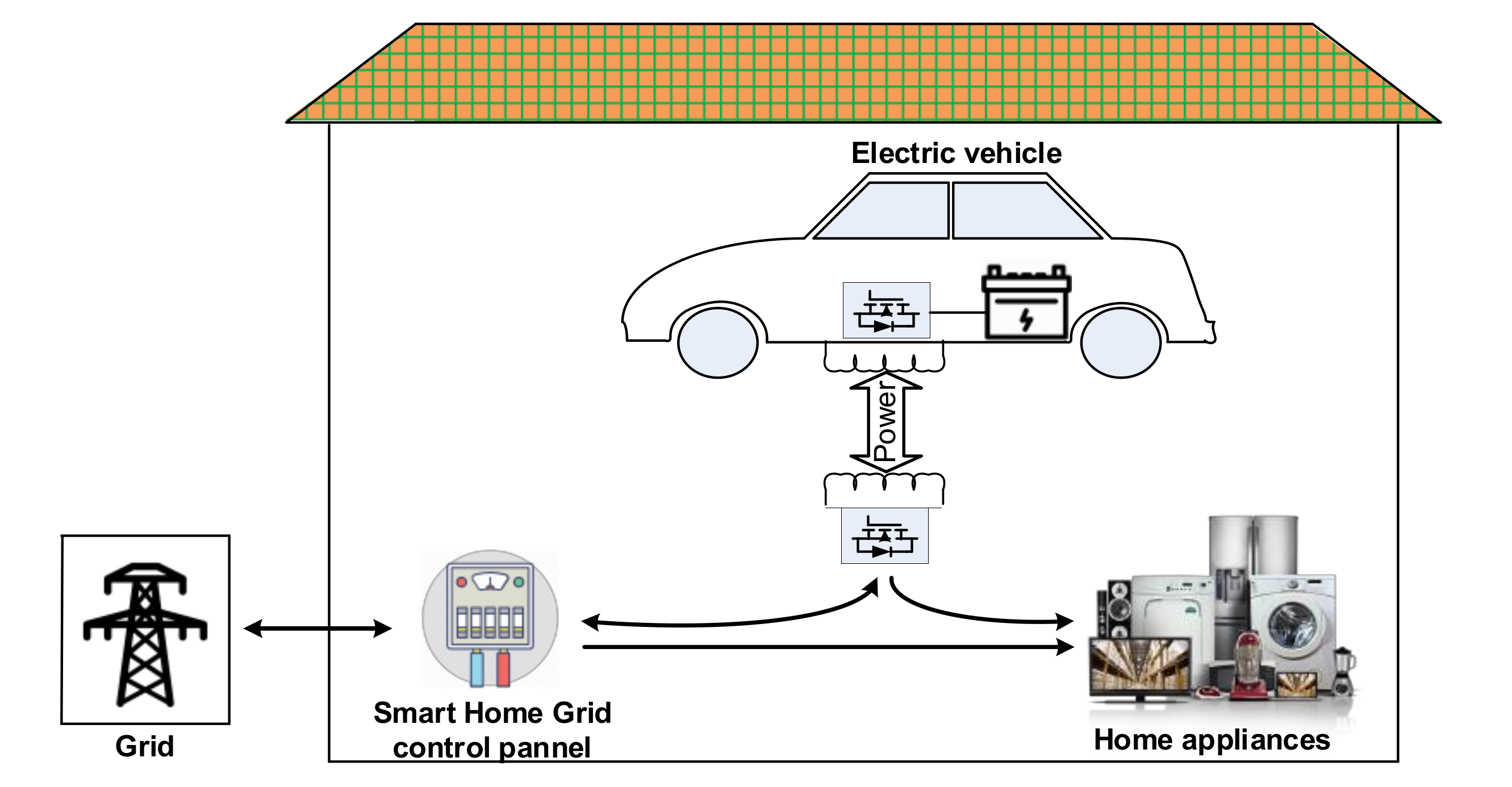
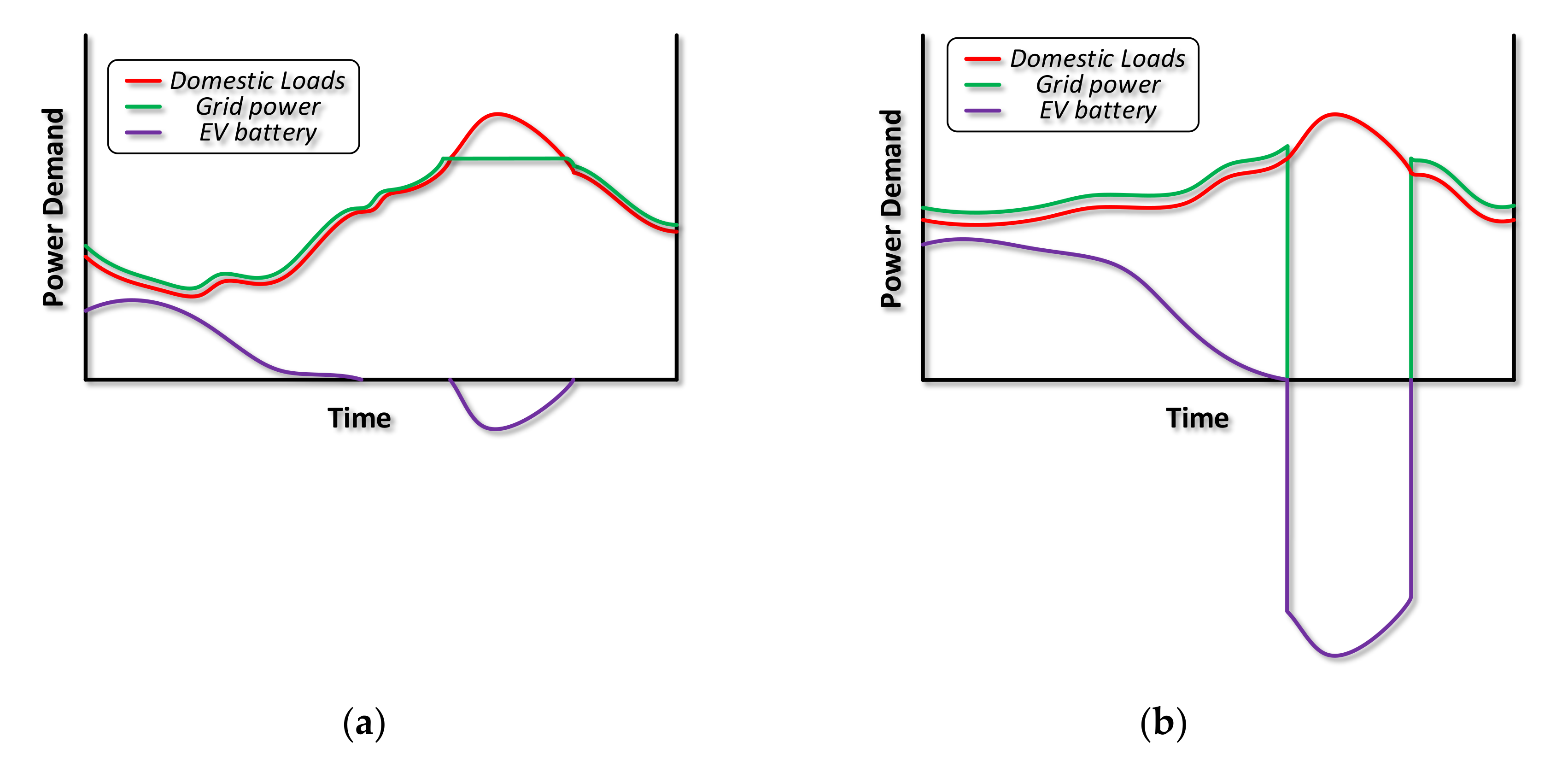



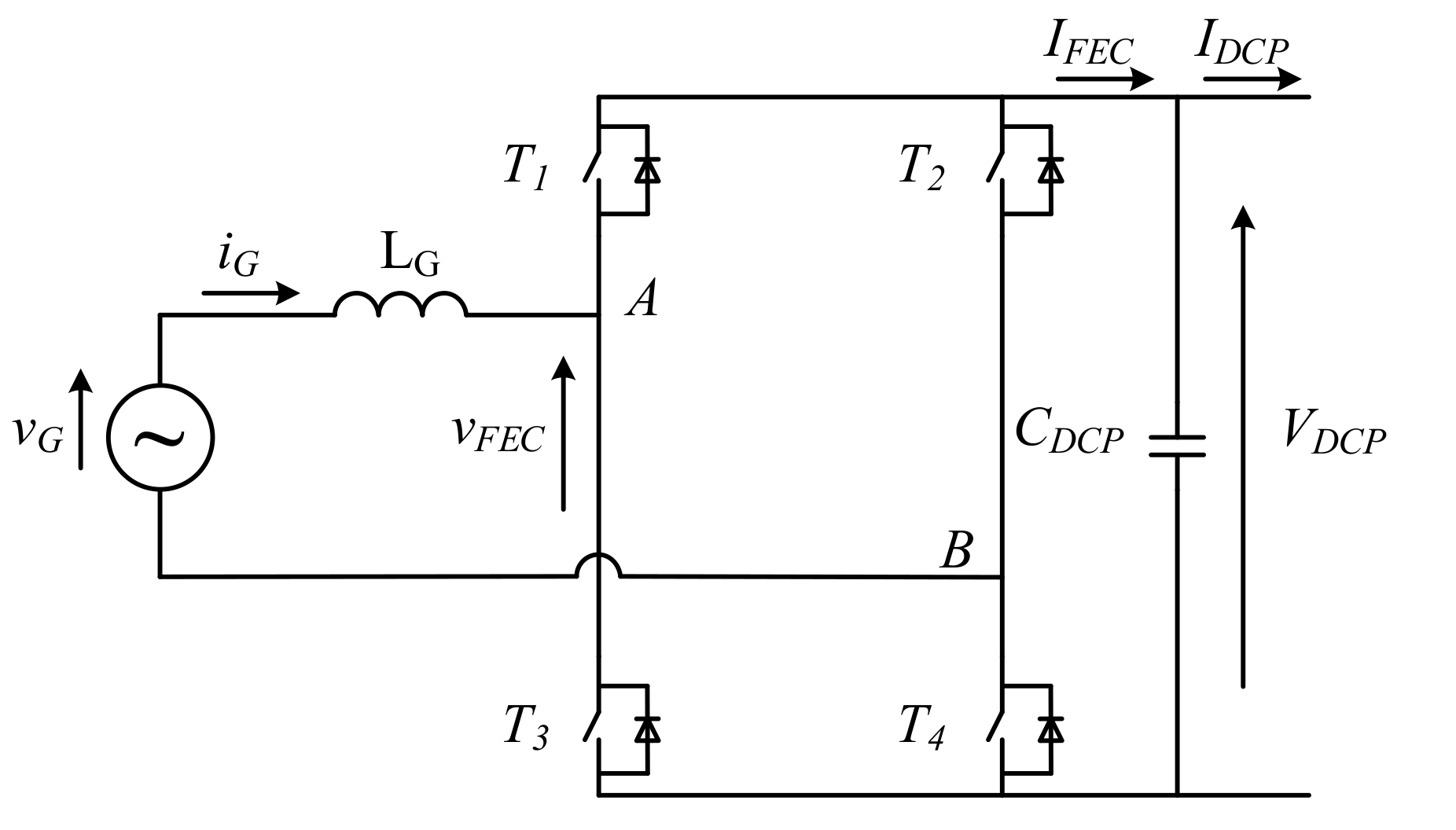


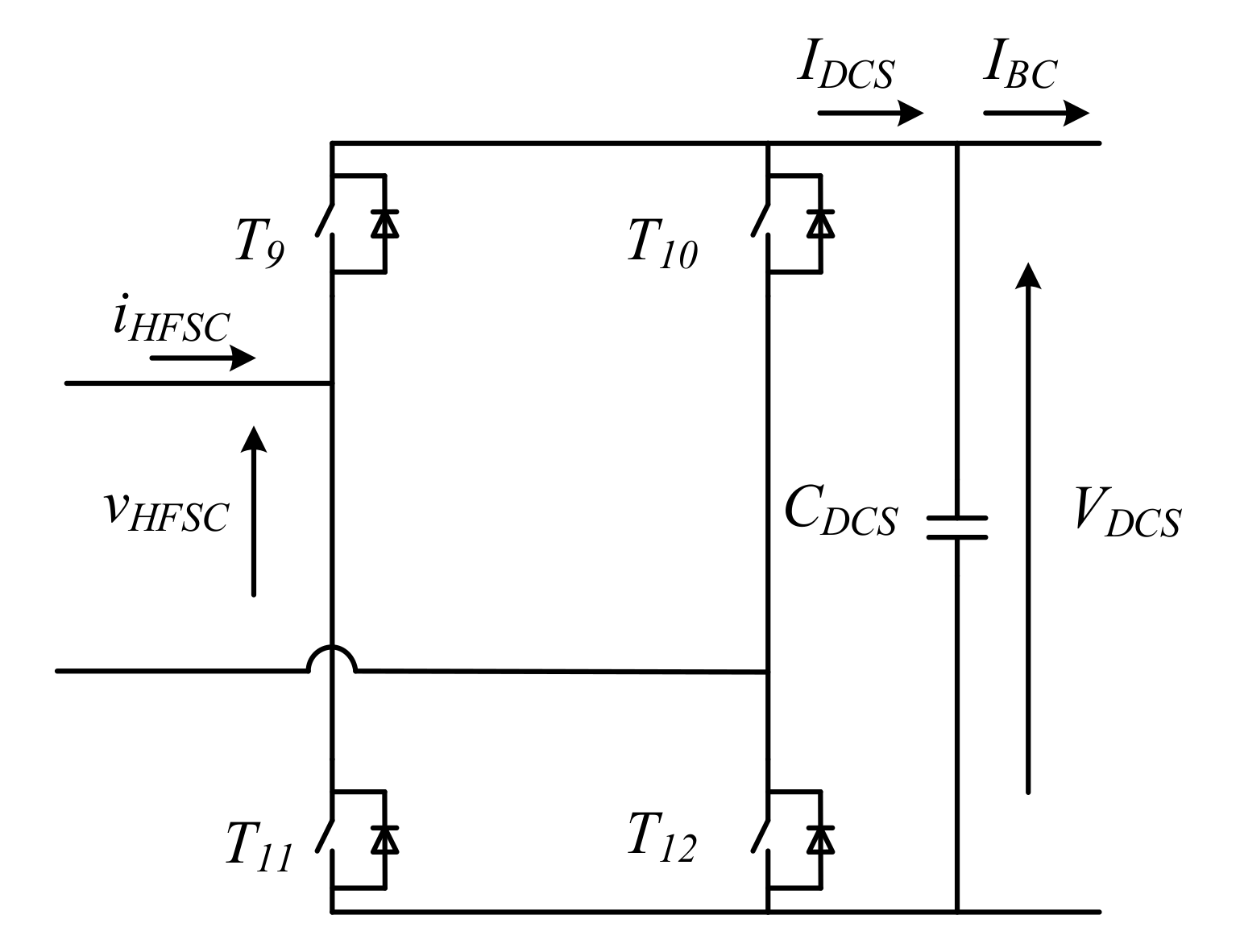

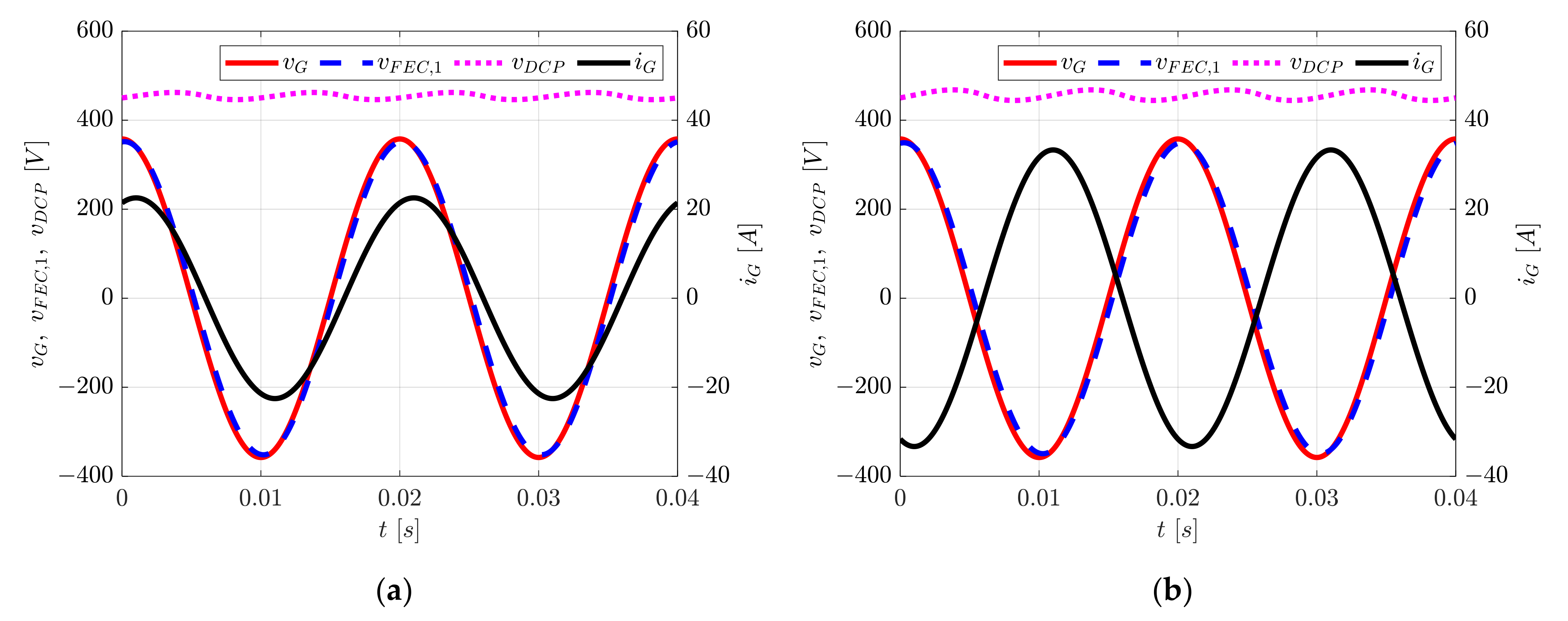

| Cell Type | VN | Vm | VM | Cells No. | VB,m | VB,M |
|---|---|---|---|---|---|---|
| LiFePO4 | 3.2 | 2.5 | 3.65 | 30 | 75 | 109 |
| LiMn2O4 | 3.7 | 3.0 | 4.2 | 26 | 78 | 109 |
| LiNiMnCoO2 | 3.6 | 3.0 | 4.2 | 27 | 81 | 113 |
| LiCoO2 | 3.6 | 3.0 | 4.2 | 27 | 81 | 113 |
| LiNiCoAlO2 | 3.6 | 3.0 | 4.2 | 27 | 81 | 113 |
| Li2TiO3 | 2.4 | 1.8 | 2.85 | 40 | 72 | 114 |
| Parameter | Symbol | Value |
|---|---|---|
| Grid-side voltage | VG,M | 358 V |
| Grid-side current | IG,M | 33.32 A |
| Battery-side voltage | VBC,M | 120 V |
| Battery-side current (charging mode) | IB,N,c | 37.4 A |
| Battery-side current (discharging mode) | IB,N,d | 50 A |
| Parameter | PG,N | PFEC,N | PHFPC,N | PHFSC,N | PBC,N | PB,N |
|---|---|---|---|---|---|---|
| Charging mode | 3.3 kW | 3.23 kW | 3.17 kW | 2.92 kW | 2.86 kW | 2.8 kW |
| Discharging mode | 4.63 kW | 4.725 kW | 4.82 kW | 5.24 kW | 5.35 kW | 5.45 kW |
| Element | Symbol | Value | Voltage (kV) | Current (A) |
|---|---|---|---|---|
| Mutual inductance | M | 16.5 μH | - | - |
| Primary coil self-inductance | LP | 162 μH | 1.85 | 21.1 |
| Secondary coil self-inductance | LS | 162 μH | 6.3 | 72.9 |
| Primary resonant capacitor | CP | 21.7 nF | 1.82 | 21.1 |
| Secondary resonant capacitor | CS | 21.7 nF | 6.3 | 72.9 |
| Converter | Element | Value | Voltage (V) | Current (A) |
|---|---|---|---|---|
| Front-End Converter | Filter inductor LG | 3 mH | 808 | 33.3 |
| Static switches | - | 462.5 | 33.3 | |
| High Frequency Primary Converter | Capacitor CDCP | 0.25 mF | 462.5 | 33.3 |
| Static switches | - | 462.5 | 21.1 | |
| High Frequency Secondary Converter | Capacitor CDCS | 6.92 μF | 143 | 72.9 |
| Static switches | - | 143 | 72.9 | |
| Bidirectional Chopper | Inductor LBC | 151 μH | 120 | 50.0 |
| Static switches | - | 143 | 50.0 |
Publisher’s Note: MDPI stays neutral with regard to jurisdictional claims in published maps and institutional affiliations. |
© 2021 by the authors. Licensee MDPI, Basel, Switzerland. This article is an open access article distributed under the terms and conditions of the Creative Commons Attribution (CC BY) license (https://creativecommons.org/licenses/by/4.0/).
Share and Cite
Bertoluzzo, M.; Giacomuzzi, S.; Kumar, A. Design of a Bidirectional Wireless Power Transfer System for Vehicle-to-Home Applications. Vehicles 2021, 3, 406-425. https://doi.org/10.3390/vehicles3030025
Bertoluzzo M, Giacomuzzi S, Kumar A. Design of a Bidirectional Wireless Power Transfer System for Vehicle-to-Home Applications. Vehicles. 2021; 3(3):406-425. https://doi.org/10.3390/vehicles3030025
Chicago/Turabian StyleBertoluzzo, Manuele, Stefano Giacomuzzi, and Abhay Kumar. 2021. "Design of a Bidirectional Wireless Power Transfer System for Vehicle-to-Home Applications" Vehicles 3, no. 3: 406-425. https://doi.org/10.3390/vehicles3030025
APA StyleBertoluzzo, M., Giacomuzzi, S., & Kumar, A. (2021). Design of a Bidirectional Wireless Power Transfer System for Vehicle-to-Home Applications. Vehicles, 3(3), 406-425. https://doi.org/10.3390/vehicles3030025







